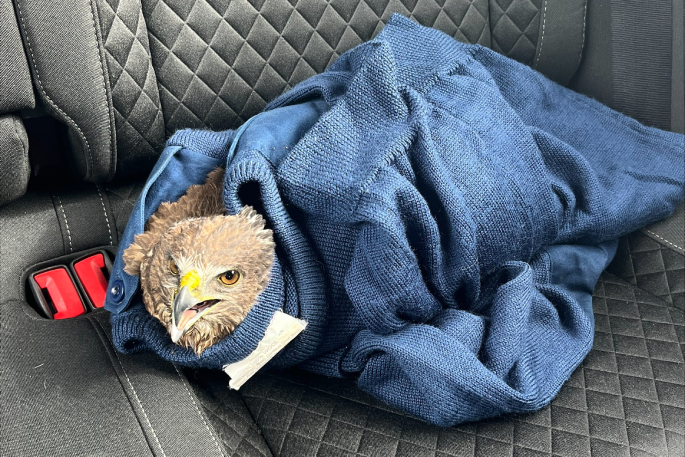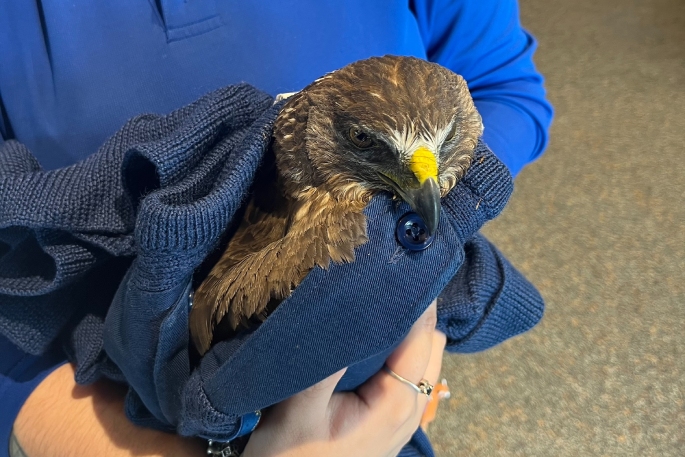Police sighted an Australasian Harrier take a dive after being hit by a car in rural Waikato on Saturday afternoon and swiftly flew to its rescue, picking it up out of the river.
Luckily for the harrier, while it could not fly it did get to take a backseat ride in a Police car to Hamilton Zoo, where it is now being cared for.
Waikato Highway Patrol Senior Constable Chris Polglase said this was just another day in rural Waikato.
 Australasian Harrier in the police car. Photo/Supplied.
Australasian Harrier in the police car. Photo/Supplied.
"Policing is about protecting and serving the community, including those overhead.”
“We are hoping the bird will make a full recovery and take this as a learning opportunity - if you’re tired take a break, preferably away from the road,” Senior Constable Polglase said.
The Australasian harrier which is also known as the swamp harrier, kāhu or harrier hawk, is a bird of the open country. It is often seen soaring and looking for prey, or eating dead rabbits or possums on the road.
Western Bay Wildlife Trust member and Bay of Plenty Birdsnz regional representative Paul Cuming said Australasian harriers are often mistaken for the Karearea (NZ Falcon).
"They are often confused," said Paul.
The New Zealand Encyclopaedia website states that the Australasian harrier also occurs in Australia, New Guinea and many islands of the southern Pacific. In New Zealand harriers are found from the Kermadec Islands in the far north, to the Chatham Islands, and they occasionally stray as far as the chilly subantarctic islands.
Fossil records show that it came across the Tasman Sea from Australia, and became established in New Zealand less than 1,000 years ago. The oldest known age for a harrier in New Zealand is 18 years.
Australasian harriers hunt in open country. After Europeans arrived in New Zealand and cleared land for farming, the birds’ numbers increased. They catch small birds and mammals up to the size of rabbits, as well as lizards, frogs, fish and large insects. They also eat carrion, including road kill and dead lambs, and spend much time hunting for birds' nests.



0 comments
Leave a Comment
You must be logged in to make a comment.